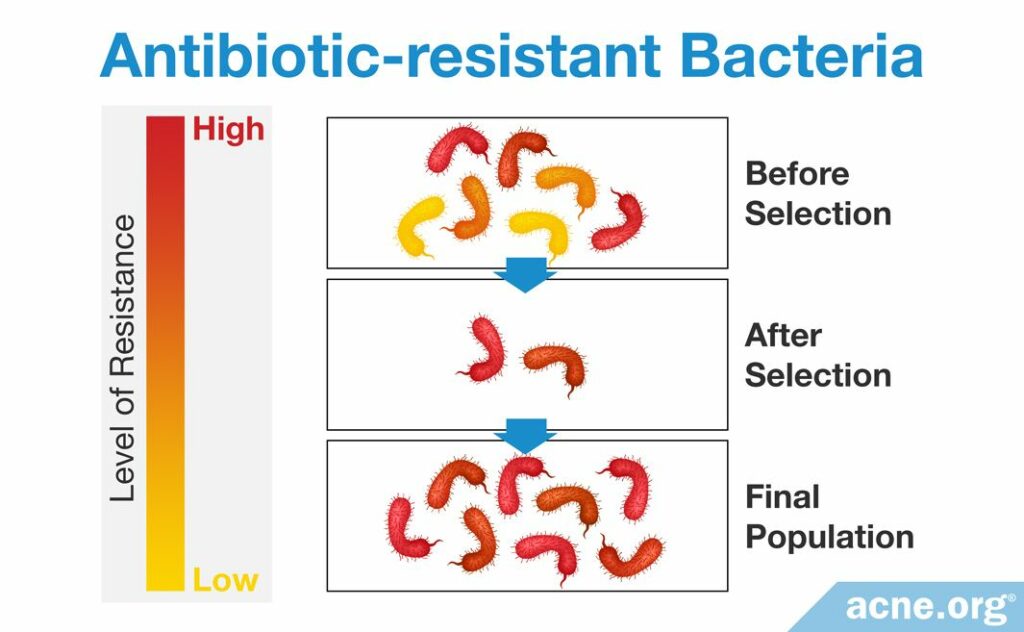Acne May Be a Side Effect of Losing Our Body Hair as We Evolved, an Adaptation That Makes Childbirth Easier, or Even a Way That Nature Prevents Teens from Having Kids Too Early

The Essential Info
Today, the majority of teenagers and many adults experience acne to some degree. Evolutionary biologists have proposed three theories to explain why this might be. One of these theories might explain why we get acne, or a combination of these theories might be the answer. However, it’s possible that a still unknown factor is at play or that acne may not be evolutionary at all.
Here are the three most common working theories:
- Our skin oil is a leftover from our ancient past when we were hairy apes and our skin oil was necessary to condition our hairy bodies. But now that we are less hairy, skin oil simply ends up clogging pores.
- Skin oil helps a baby to pass through the birth canal more smoothly. The areas that have large skin oil glands are some of the same areas that tend to get stuck in the birth canal during labor, such as the shoulders and forehead. The excess skin oil in these areas, while helping us during birth, causes problems later in life by making us prone to acne.
- Acne has actually helped ensure our species’ survival. By making teens temporarily less attractive as sexual partners, acne prevents humans from having children too early, forcing them to wait until they can be better parents.

The Science
- Evolution: A Crash Course
- 1. The “Side Effect” Theory: Acne Is a Byproduct of Natural Selection
- 2. The “Slippery Baby” Theory: Acne Is a Consequence of Natural Selection
- 3. The “Nature’s Contraceptive” Theory: Sexual Selection Explains Why Acne Is Here to Stay
Acne is officially defined as a disease. It certainly feels that way to people who suffer from acne. However, the fact that acne is so incredibly common throughout the world begs the question of whether there could be some reason why evolution kept acne around. Does acne serve some evolutionary purpose, is it just a glitch of our biology, or is there another explanation?
Scientists have come up with three theories to explain why we might have evolved to develop acne:
- The “Side Effect” Theory: This theory suggests that acne developed as a side effect of us losing our body hair during evolution. As humans evolved from hairy apes, we lost body hair faster than we lost skin oil. When there was no longer enough body hair to push skin oil out of pores, skin oil ended up staying inside pores, clogging the pores, and ultimately causing acne.
- The “Slippery Baby” Theory: This theory suggests that as babies, we need a lot of skin oil on the face and shoulders to lubricate our passage through the birth canal. However, later in life, this skin oil can become problematic and cause acne.
- The “Nature’s Contraceptive” Theory: This theory suggests that teen acne was actually an evolutionary advantage for humans. Teenagers who developed acne were temporarily less attractive to the opposite sex and were less likely to have children early, when they would have struggled to raise them. By the time the acne cleared in their late teens or early twenties, they were more mature and better able to raise healthy kids who survived and passed on their genes.
To better understand these three theories, we need to take a step back and look at exactly how evolution works. I find this stuff fascinating, so feel free to go on this exploration with me, but if you’re good to go at this point, the takeaway is that we have these three possible explanations, but they are just theories. They are not fact. Acne could be the result of one of these theories, a combination of these theories, or it might not be evolutionary at all. Evidence shows us that hunter-gatherers don’t tend to have acne, so it might be something about how we live in modern society that’s causing acne.
Evolution: A Crash Course
Charles Darwin proposed the Theory of Evolution by Natural Selection in the mid-19th century. First, let’s unpack the name of his theory:
- Evolution: The word “evolution” means change in the characteristics of a species over successive generations. In other words, in the scientific sense, we can say that humans as a population evolve over thousands of years, but we cannot say that an individual person evolves over her lifetime.
- Natural Selection: Natural selection means that conditions in nature (the environment) select which individuals in a population get to survive and pass on their genes. People often describe this as “survival of the fittest,” meaning that the individuals who “fit” the current environment best will be more likely to survive, thrive, and reproduce.1
Now let’s look at an example of how evolution works.
Example: Natural selection at work
Imagine a species of snakes whose skin can either be green or orange, in the same way that human skin can vary in color. Suppose that this variation is genetic, so that a green snake will have green offspring, and an orange snake will have orange offspring.
Let’s pretend this population of snakes starts out with equal numbers of snakes of each color.
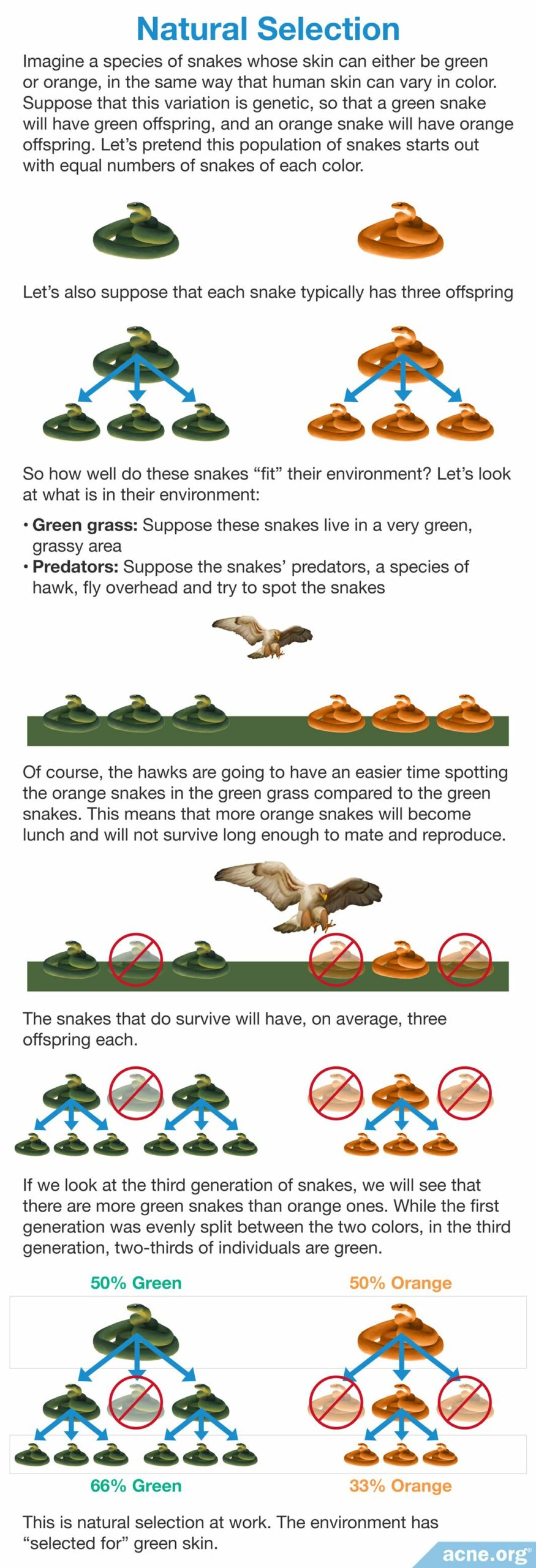
This is natural selection at work. The environment has “selected for” green skin.
Even though this is a made-up example, it is realistic because many species evolve to blend into their surroundings in just this way.
If you want to take a look at a real-life example of evolution, expand the section below.
Now that we know how natural selection works, we are almost ready to dive into the theories of why humans have acne, but for the theories to make total sense, we first need to take a quick look at a special type of natural selection called sexual selection.
Sexual selection
In sexual selection, it is not the environment but members of the opposite sex that select for particular traits. When individuals of one sex choose mates of the opposite sex, they find certain traits more attractive.
For example, in some frog species, female frogs choose the males with the deepest croaks during the breeding season. As a result, these males then have the best chances of mating with females and fathering offspring, who will inherit deep croaks. In other words, female frogs select for deep croaks, which means that over generations, more and more frogs in the population will have deep croaks. This is sexual selection at work.2
Now we have all the tools we need to understand the three current theories on why humans evolved to have acne:
- The “Side Effect” Theory: This theory uses the principles of natural selection to explain why humans today have acne.
- The “Slippery Baby” Theory: This theory also uses the principles of natural selection to explain why humans today have acne.
- The “Nature’s Contraceptive” Theory: This theory uses the principles of sexual selection to explain why humans today have acne.
Let’s look at each theory in more detail to see if it holds water.
1. The “Side Effect” Theory: Acne Is a Byproduct of Natural Selection
Dr. Stephen Kellett and Prof. Paul Gilbert proposed this theory in a 2001 article in the British Journal of Health Psychology.3 Here are the main points of the theory:
- Animals that have body hair/fur need skin oil: Skin oil conditions body hair/fur, which in turn keeps animals warm, protects them from the elements, and helps them blend into their surroundings.
- Hairless skin is more sensitive than skin with body hair: Glabrous (hairless) skin contains more nerve endings, so it is more sensitive than skin that is covered with body hair. For example, chimpanzees have glabrous skin on their hands, allowing them to communicate with each other by touch and to better explore their environment.
- Humans have evolved to have glabrous skin, but have not yet lost skin oil: As our brain size increased and we became capable of more complex thought, we made the most of all the sensory information we could get our hands on. That’s why it became advantageous for our bodies to gradually replace hairy skin with glabrous skin. However, skin oil glands have not caught up and are still producing skin oil as though our bodies were covered in hair.
- Skin oil has nowhere to go and ends up clogging pores: In modern humans, skin oil that is supposed to lubricate hair has very little body hair left to lubricate. Instead, it ends up building up, clogging pores, and forming comedones (whiteheads and blackheads), which is the first step toward acne.4,5
Although this kind of theory is impossible to prove, the scientists put forward some evidence that supports their idea. They noted that the only animals who can develop acne are hairless, including:
- Mexican Hairless Dogs: This breed of dogs is the only type of animal besides humans that naturally develops acne. In fact, the dogs’ acne looks similar to human acne, with excess skin oil and clogged pores.
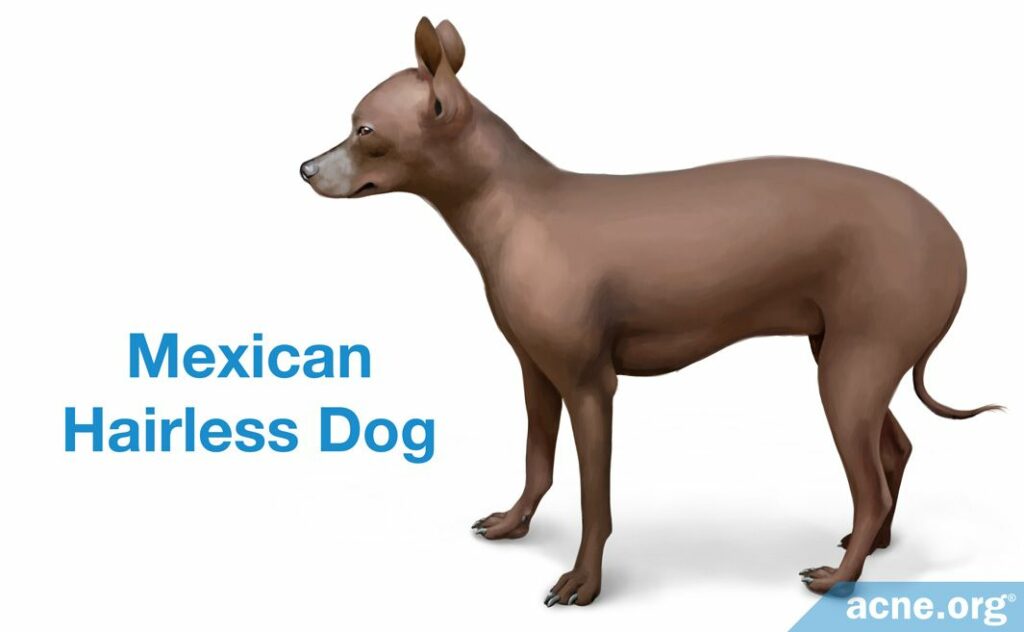
- Rhino mice: Even though these hairless mice do not naturally have acne, scientists can induce acne in them in order to study how acne develops and how to treat it. The fact that scientists can only induce acne in hairless mice suggests that lack of body hair is an important condition for developing acne.3
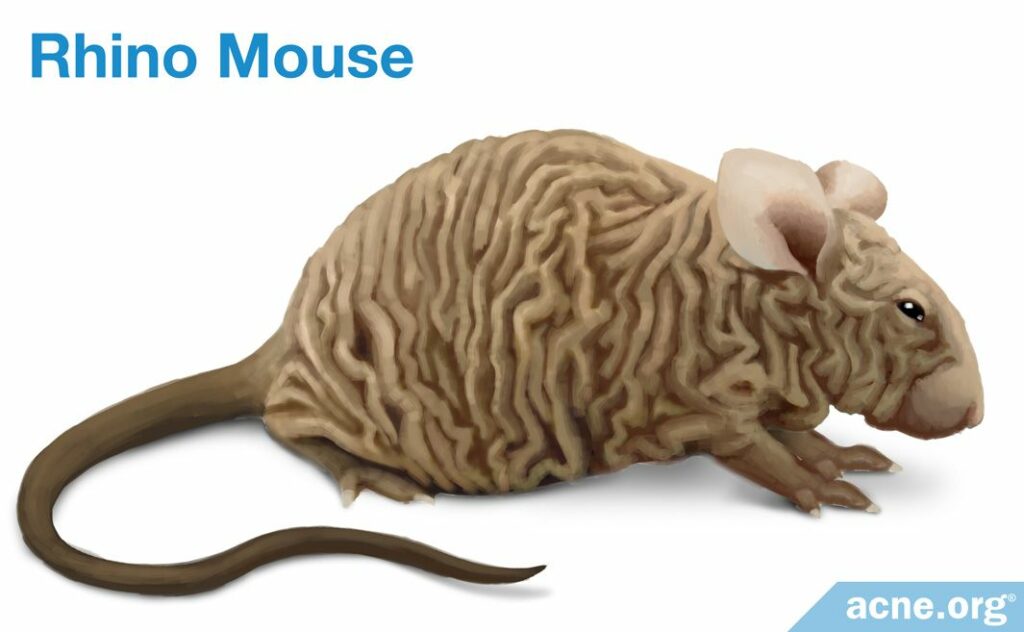
Now let’s look at the second theory, which suggests that acne actually benefits the human species.
2. The “Slippery Baby” Theory: Acne Is a Consequence of Natural Selection
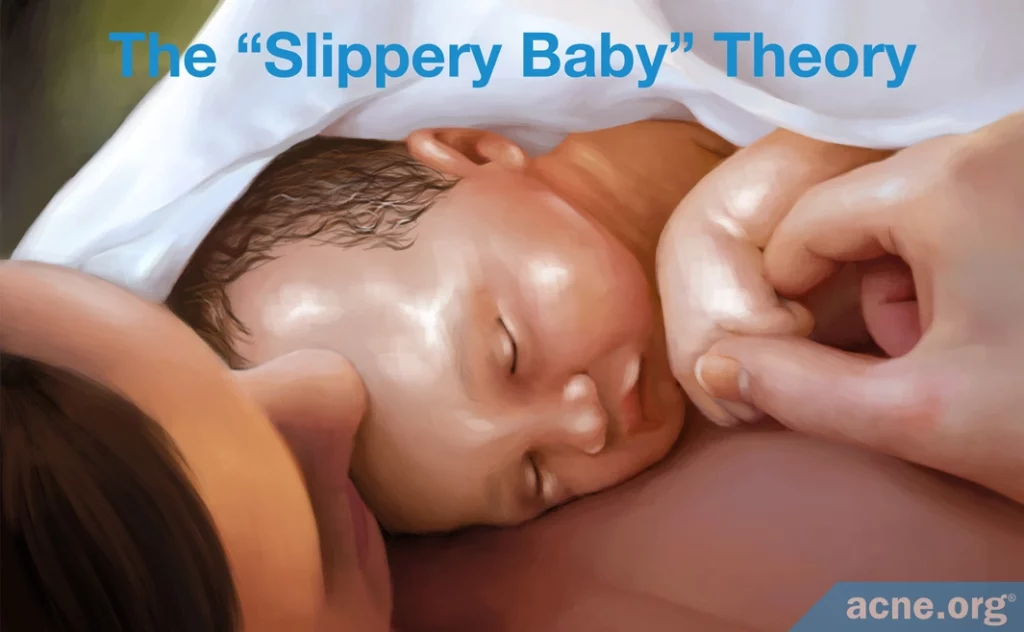
Dr. Jack Shannon proposed this theory in a 2020 article in the journal Medical Hypotheses.6 Here are the main points of the theory:
- Skin oil glands develop and start producing skin oil in babies before birth: Skin oil glands in babies develop after the fourth month of gestation, while the baby is still in the uterus. By the time the baby is ready to be born, the skin oil glands are large and producing a lot of skin oil.
- Skin oil glands are most concentrated on parts of the body that tend to get stuck in the birth canal during labor: The highest density of skin oil glands is found on the face, shoulders, chest, and back. These are the same body parts that often cause an obstruction during birth. Having extra lubrication from skin oil at these sites might increase the chances of a successful delivery.
- Skin oil glands that were needed at birth cause problems later in life: Although babies do sometimes have acne, acne most often develops after puberty. Puberty causes hormonal changes that trigger the skin oil glands to become overactive, which can lead to clogged pores and acne.
Like the first theory, the “slippery baby” theory is impossible to prove, but Dr. Shannon points out an interesting pattern:
- Humans are the species that struggles most during labor and also the only species that suffers from acne: Because our brains are so large relative to our bodies, a newborn baby’s head has a hard time passing through its mother’s pelvis. That’s why humans have more difficulty in labor than any other animal species. There is even a special term, “dystocia,” for obstructed labor in humans. Dr. Shannon argues that it’s not a coincidence that we are also the only species that struggles with acne.6
Finally, let’s examine the third theory, which suggests that acne might help the human species in a different way.
3. The “Nature’s Contraceptive” Theory: Sexual Selection Explains Why Acne Is Here to Stay
Dr. Dale F. Bloom proposed this theory in a 2004 article in the journal Medical Hypotheses.7 Here are the main points of the theory:
- Humans are physically able to have kids before they are mentally and emotionally ready: Humans become sexually mature before they have developed the mental capacity and acquired enough skills to provide for their children and be successful parents.
- Acne most often strikes teenagers and goes away when the brain is fully developed: Acne typically starts at puberty and goes away in a person’s early twenties, which is about the time the prefrontal cortex (the part of the brain responsible for complex thought, decision-making, and regulating social behavior) is fully developed.
- Humans unconsciously look for sexual partners who are healthy and possess “good genes”: Like all animals, humans are hard-wired to look for mates with “good genes” who will give rise to healthy offspring. For example, females tend to prefer males with a symmetrical face, which indicates normal development and good health.
- Acne looks similar to an infection and temporarily makes a person appear unhealthy: Although acne is not an infectious disease, it does resemble an infection because it involves skin redness, bumps on the skin, and sometimes pus and/or skin darkening. Potential mates may subconsciously read these symptoms as signs of poor health and a contagious infection and avoid the person with acne as a sexual partner.
- Acne makes people shy away from company: Acne sufferers themselves are often embarrassed about or uncomfortable with their appearance, leading them to shy away from others. This is another way that acne reduces the chances of sexual interaction.
- Acne increases the likelihood that a person will only have children once he or she is ready to take care of them: A teen with acne is less likely to find a mate and reproduce. When the acne clears, he or she will be more mature and more likely to raise kids who thrive and pass on their genes.
According to this theory, people who have acne as teens are actually more likely to succeed in an evolutionary sense, meaning their genes get to live on in future generations.
In other words, the scientist who put forward this theory believes that acne is not so much a disease as a beneficial evolutionary trait. She wrote, “[I propose] that common acne, far from being a disease…is, instead, an evolutionary adaption [sic] that stems from normal physiological processes…that the condition has evolved as a mechanism to ward off potential mates until the afflicted individual is some years past the age of reproductive maturity. At that point, equipped with a mature brain and a set of learned skills, he or she would be more emotionally, intellectually, and physically fit to be a parent.”7
Again, there is no way to prove this theory is correct, but here are some observations that support it:
- Acne is almost universal in teens: Some studies have found that up to 85% of adolescents (teens) and up to 100% of teen boys experience acne to some degree.
- Acne occurs on visible parts of the body: Acne develops exactly where potential mates are most likely to see it, such as on the face and upper body.
- Some ethnic groups that reach puberty at a later age are free from acne: The Kitavan Islanders of Papua New Guinea, a hunter-gatherer society, very rarely develop acne. In this population, puberty is delayed compared to most Western societies. For example, Kitavan girls first menstruate at age 16, compared to American girls who first menstruate at 12, on average.8 In other words, perhaps people in those societies do not need acne to prevent them from sexual activity at too early an age, because they can only have kids when they are older anyway.7
It is important to note that there could be other explanations for why some hunter-gatherer societies like the Kitavan are less prone to acne. For example, it may have something to do with their diet and lifestyle.
Indeed, with all three of these theories about why humans may have evolved to have acne, we can only notice that certain phenomena seem to go together–such as loss of body hair and acne–but we cannot prove that one caused the other.

